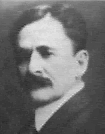|
|
|
|
|
|
|
|
|
"The most important fundamental laws and facts of physical science have all been discovered, and these are now so firmly established that the possibility of their ever being supplemented in consequence of new discoveries is exceedingly remote." Albert Abraham Michelson (In 1903) |
 |
Early in the eighteenth century, Newton published his assertion in a corpuscular theory of light. The experimental data available at the time led him to the conclusion that light consisted of small particles that: a) traveled in straight lines at great speeds; b) reflected from mirrors in a predictable way; and c) changed direction by speeding up when crossing from air to denser materials. While Newton's ideas were challenged by a rival wave theory set forth by Christian Huygens (1629-1695), the triumph of mechanics as laid out in the Principia gave him afforded him the intellectual high ground in this battle of the theories. The wave theory was plausible. but most bet on corpuscles.
The supremacy of a particle theory lasted in 1801 when Thomas Young in England did a series of experiments passing light through narrow slits to show that light had a wave nature. (See Optics, Light as a wave) It became very cumbersome to manipulate the corpuscular theory to explain the pattern of bright and dark bars on a screen when such evidence is prima facie evidence of waves.
Young's wave theory of light was therefore
solidly ensconced in physics books in the nineteenth century until
Max Planck suggested that light existed with a dual nature, sometimes
behaving with wave properties but carrying its energy in packets
that are called quanta or photons. The need for such a departure
from tradition came as a result of the discovery of the photoelectric
effect by Heinrich Hertz in 1887. Einstein wrote about such an
arrangement in a paper he published in 1905 that detailed a quantized
energy picture for light. It was for this work, and not for relativity
and E = M C-squared, that he won a Nobel prize in 1921. The web
sites listed here will give you a more detailed explanation of
what is happening. A set of problems is also included to reinforce
your understanding.
See also
http://www.ee.umd.edu/~taylor/optics7.htm
http://theory.uwinnipeg.ca/physics/quant/node3.html
http://www.geocities.com/CapeCanaveral/1640/ShowPhoto.html
http://zebu.uoregon.edu/~js/glossary/photoelectric_effect.html
On-line - propagation of electromagnetic
wave
http://www.ee.umd.edu/~taylor/optics8.htm
This page was last reviewed by mgosselin 10/09/2005